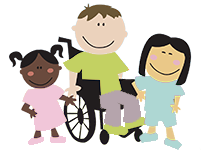According to a recent study headed by Dr. Pauline A. Filipek, MD, at the UT Health Science Center in Houston, social communication deficits are measurable in very young infants at risk for autism spectrum disorders. Dr. Filipek presented her findings at a recent conference sponsored by the Texas Autism Research & Resource Center (TARRC).
Dr. Filipek’s study is based on the premise that early identification of young infants at risk for a later diagnosis of ASD is important so the earliest possible intervention may be initiated. According to her research, most studies of infant siblings of children with ASD report no abnormalities until after 6 months and often not until 9-12 months of age. Dr. Filipek found that most studies that did not report abnormalities used the Mullen Scales of Early Learning. However, she found that clinical examination of infant siblings of children with ASD demonstrates some differences at an earlier age.
Conclusions of her study revealed that those infants with significantly less eye contact than is typical for this age during spontaneous interactions and post-spontaneous still face (the communication partner maintain flat affect after the initial period of interaction) where at a higher risk of receiving a diagnosis of ASD at a later time. Dr. Filipek found that the Rossetti Infant-Toddler Language Scale also identified social communication deficits as early as 3 to 6 months.
Dr. Filibek recommended an intensive interactive program for infants that are identified as at risk for social communication disorders. This would mean that families and professionals would insure that many planned times to foster interactions and eye contact are built in throughout the day.
What kinds of activities can a family do to foster these early social communication skills?
- Build in periods of face to face time with your baby throughout the day. During these times, use “motherese”, which is basically baby talk Using a lot of intonation and pitch changes with a happy exaggerated facial expression is important. Lots of gentle touch is important during these times. Using interesting toys to capture attention is fine as long as the focus is on encouraging eye contact.
- If you have a baby that is content to sit and stare at the window or TV, avoid the tendency to label them as a “good baby” and go about your other chores. It is critical to foster interaction.
- Respond immediately to any babbling or eye contact with your own vocalizations and eye contact. Let them see the results of initiation!
- Be sure that when you feed your baby or are engaged in any routine that your baby likes, that you foster eye contact and verbalization. You want them to associate communication with positive experiences.
Obviously, these ideas are good for any baby, but may be critical for infants that have siblings on the autism spectrum or that simply seem less interested in making eye contact or interaction.
If you have any concerns about your baby’s social interactive development, contact your pediatrician. You might also want to contact a speech language pathologist who has experience working with the pediatric population. Social Communication development is foundational for pragmatic language skills in later development.
Anne Bramlett, MS, CCC/SLP

Comments (0)